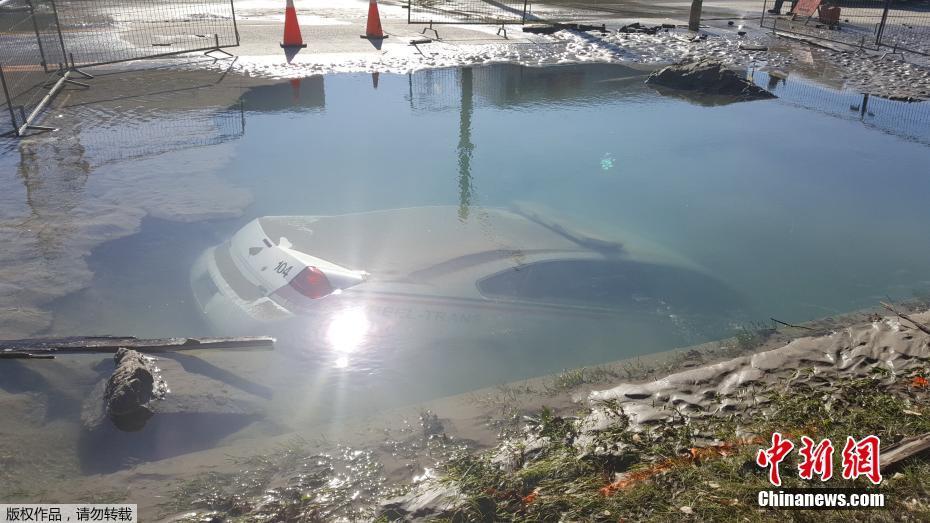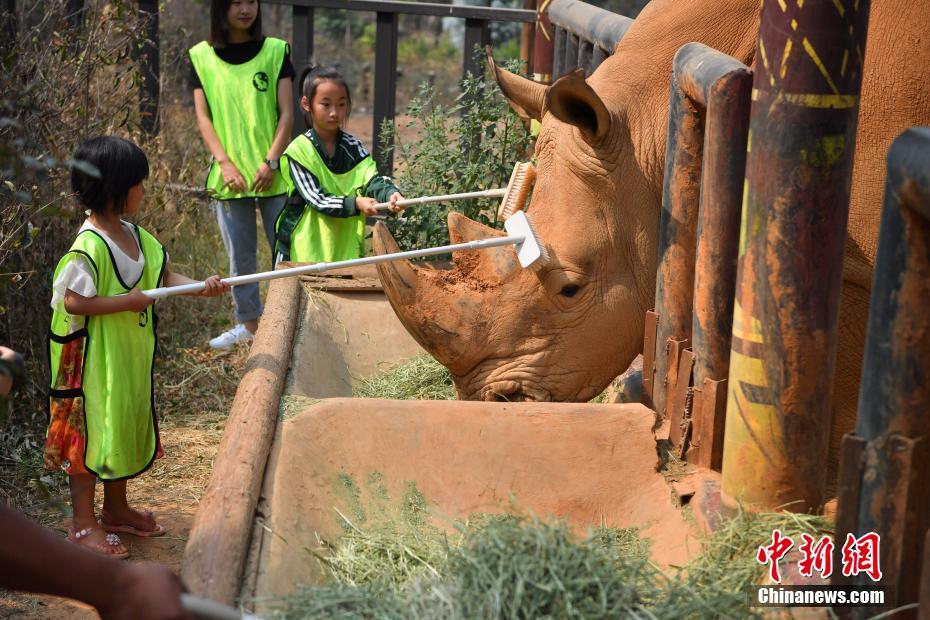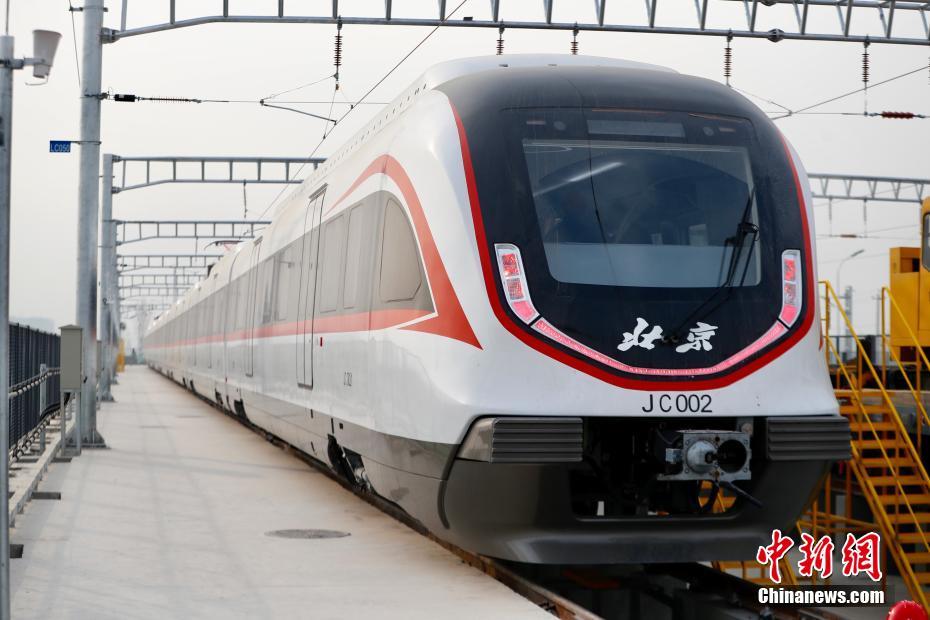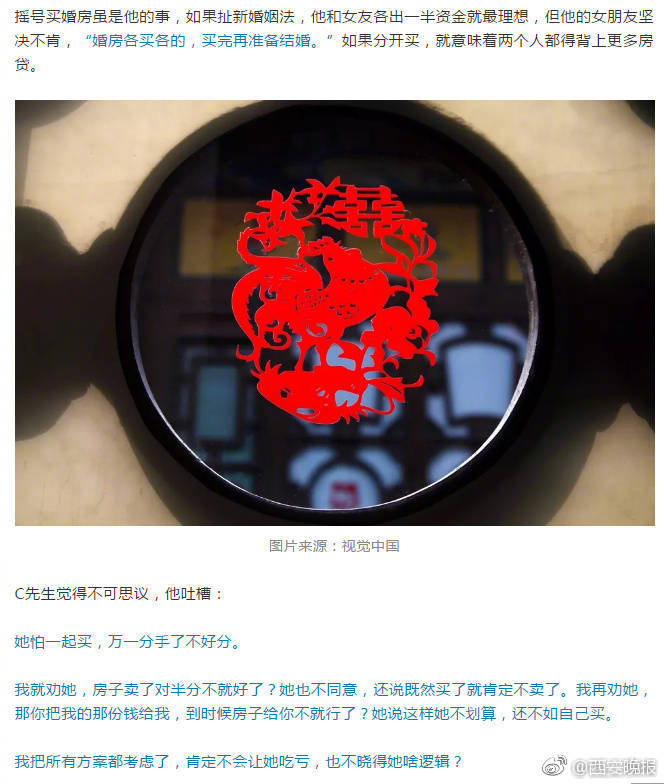
The tightening wheel generally uses gravity to tighten the steel wire rope of the speed limiter-safety clamp protection device to ensure the pulling force (traction) of the speed limiter on the steel wire rope. The steel wire rope of the tightening wheel is wrapped around the speed limiter and connected to the safety clamp connecting rod pull-arm, forming a speed limiter-safety clamp protection device, which plays a role in speed limit protection.
[Pacific Automobile Network] The function of the tightening wheel is to adjust the tightness of the timing belt. Generally, it is changed with the timing belt to avoid worries.Other parts must be replaced if they are not necessary, as long as they are maintained regularly. The engine oil must be changed frequently. Generally, it should be changed after 4,000 to 5,000 kilometers.
It has the effect of maintaining the tension of the steel wire rope and reducing the vibration of the steel wire rope. Close contact with the elevator wire rope to maintain a certain tension. This helps to maintain the stability of the steel wire rope, prevent it from loosening or over-tightening, and ensure the smooth operation of the elevator. When the elevator goes up and down, the steel wire rope will vibrate.
The tightening wheel is a belt tensioning device used in the automobile transmission system. The tensioning wheel is mainly composed of fixed housing, tensioning arm, wheel body, torsion spring, rolling bearing and spring shaft sleeve, etc. It can automatically adjust the tension force according to the different degrees of elasticity of the belt to make the transmission system stable, safe and reliable.
Hello! It will cause insufficient tension, slippage of the belt pulley, resulting in insufficient power generation, and abnormal sound of the belt. I hope it can help you. Hope to adopt.
If the expansion wheel is broken, the engine jumps to ignite at the right time, or the gas distribution time is chaotic, causing the engine to shake and make it difficult to ignite, it is recommended to deform the valve top when you can't get on the car and replace it immediately.
The performance of generator tension wheel failure is as follows: the engine noise suddenly increases when accelerating (especially at a speed of about 1500). Engine timing jump tooth ignition and gas distribution time disordered engine shaking and ignition difficulty (if it is serious, you can't smash the car directly). In the above situation, the solution: check whether the tensioning wheel is damaged and go to the repair station for repair.
It will affect. If the tightening wheel is broken, it will affect the timing of the engine, the ignition and gas distribution time will be disordered, and the engine will shake and it will be difficult to ignite. When it is serious, it will not be able to start the car. After landing, the valve roof can be deformed. It is recommended to replace it as soon as possible.
The second light consequence is that there is a strange sound of "chickling" when the engine is started. The serious consequence is that the car broke down. Because the tensioner is broken. The generator belt doesn't work, the generator doesn't generate electricity, or the air conditioning pump doesn't work and there is no air conditioner. I hope it will be helpful to you.
Hello, a series of safety problems will occur after the car tensioner fails. The generator does not generate electricity and the water pump does not work, resulting in high temperature and damage to the engine. When is it recommended to replace it to avoid unnecessary losses.
Method: When installing, stabilize the iron card behind the tensioning wheel in the corresponding cover on the cylinder block, and then slightly tighten the screw, rotate the adjustment tensioning wheel counterclockwise until the ironhead behind the tensioning wheel, and rotate it to the corresponding ironhead groove. Position. You can tighten the screw.
Han't you repaired it? First, find the camshaft gear [mark on the shell, a slash] just align the gear mark "just the position of one cylinder", the oil pump mark, turn the engine, and aim the flywheel mark at the slash on the shell, "this is the position of a cylinder", and then it's up to you.
The installation position of the tightening wheel is next to the chain. The tightening wheel is a belt tightening device used in the automobile transmission system. The rising and tightening wheel is mainly determined byIt is composed of fixed housing, tensioning arm, wheel body, torsion spring, rolling bearing and spring shaft sleeve, etc., which can automatically adjust the tightening force according to the different degrees of elasticity of the belt, making the transmission system stable, safe and reliable.
If the tensioning wheel does not position the lug, it can be used as an installation reference surface through natural fall. Adjust the direction. After installing the double eccentric tensioner in the system, it is necessary to adjust the angle of the eccentric to tighten the belt. For most tensioners, we can adjust the tensioner clockwise or counterclockwise through the arrow at the front of the wheel.
Alim the crankshaft according to the mark on the crankshaft timing pulley, and the stop position of the piston of 1 cylinder is required. When installing the camshaft, the mark on the pulley is aligned with the camshaft, and the double camshaft is aligned with the two camshaft positions respectively. Just install the timing belt/chain.
The installation method is as follows: When removing the tightening wheel, the generator belt should be removed first, and then the tightening wheel should be removed. When disassembling the tightening wheel, first adjust the adjustment bolt of the tightening wheel, that is, loosen the belt a little.

1. Generally speaking, when the carThere is high fuel consumption, the engine will jump from time to time, the ignition and gas distribution time are disordered, and the engine shakes and it is difficult to ignite. At the same time, the belt is accompanied by cracks and elongation deformation. At this time, it is necessary to replace the tightening wheel of the car.
2. The generator tightening wheel is generally replaced together with the generator belt. Generally, it is replaced once every 2 years or about 6W kilometers, or it needs to be replaced when the tightening wheel fails.
3. The idler wheel needs to be replaced for about 6 years or 90,000 kilometers, and the tightening wheel needs to be replaced for about 60,000 kilometers. According to the query of Pacific Automobile, the idler wheel needs to be replaced for about 6 years or 90,000 kilometers, and the tightening wheel needs to be replaced for about 60,000 kilometers.
4. Once the tensioning wheel or idler wheel is damaged, the belt may be damaged and broken. The accessories do not have a lid, so the appearance is easy to see, and it can also be seen whether it is aging or not.There will be small cracks on the inside of the aging belt. If there are too many cracks, it means it's time to replace them. If it is not replaced in time, once the belt breaks, the car will lose the direction assistance.
5. The tightening wheel is used to tighten the engine or chain belt. Usually, the life of the belt tightening wheel is twice that of the belt, that is, if the belt has a life of 60,000 kilometers, then the life of the tightening wheel is 120,000 kilometers. If it is a chain tightening wheel, its life is equivalent to that of a chain. Nowadays, many cars are maintenance-free, that is to say, they do not need to be replaced for life.
6. Under normal circumstances, the tightening wheel is the same as the timing belt replacement cycle. It is recommended to replace it once every 3-5 years or about 80,000-100,000 kilometers. For the specific replacement time, please refer to the vehicle maintenance manual.
Once the tightening wheel is damaged, the tightness of the belt will not be adjusted, and the engine will have abnormal noise, timing jump, ignition and gas distribution time disorder.
[Pacific Automobile Network] Once the tightening wheel is damaged, the elasticity of the belt cannot be adjusted. The engine will make abnormal noises, and the timing of jumping teeth, ignition and gas distribution time will be disordered, which will affect the normal use of the car. It will also cause the car to jitter, increase in fuel consumption, weak acceleration, explosion and other faults.
The failure of the car tighter will cause the engine to shake and the difficulty of ignition. In serious cases, the car cannot be hit, and the valve roof may be deformed, causing damage to engine parts. It is more likely to die, causing the belt to be unable to be transmitted normally, resulting in car breakdown and other consequences.
Once the tightening wheel is damaged, the tightness of the belt cannot be adjusted, and the engine will have abnormal noise, timing jump, ignition and gas distribution time disorder.
It can be judged that the tightening wheel is broken by the aspects of engine noise, jumping teeth, ignition and gas distribution disorder, insufficient power, abnormal starting noise, and professional hand feeling. There will be a lot of noise when the engine accelerates, especially when the speed is 1500 rm. The engine is timing. The ignition and gas distribution time are disordered.
If the tightening wheel is broken, there will be the following phenomena: abnormal sound occurs at about 1400-1500 rpm. The abnormal sound is more obvious in the case of large power consumption such as turning on the air conditioner, uphill, turning, etc.The resonance is obvious. To exaggerate, it feels like a manual gear.
This is because the way to judge that the tightening wheel is broken is 1 the resonance is obvious, the noise is loud when accelerating rapidly, and the power is insufficient. 2 the vehicle will make a squeaky sound when starting 3 the sound is large when the power consumption is large. The tightening wheel is used for the belt tensioning device of the automobile transmission system. The tightening wheel is mainly made of the fixed shell. Body.
If the wheels are tightened during driving, there will be no brakes and no direction, and the consequences will be very serious. This is because the tensioning wheel is broken, causing the belt to loosen or even break, which affects the steering assistance, and the air conditioner and engine on the belt fail. Professionals can know the quality of the tightening wheel by feeling tight with their hands.
How to judge that the rising wheel is broken? If the tightening wheel is broken, there will be the following phenomena: abnormal sound occurs at about 1400-1500 rpm.The abnormal sound is more obvious in the case of large power consumption such as turning on the air conditioner, uphill, turning, etc. The resonance is obvious. To exaggerate, it feels like a manual gear.
*How to map complex products to HS codes-APP, download it now, new users will receive a novice gift pack.
The tightening wheel generally uses gravity to tighten the steel wire rope of the speed limiter-safety clamp protection device to ensure the pulling force (traction) of the speed limiter on the steel wire rope. The steel wire rope of the tightening wheel is wrapped around the speed limiter and connected to the safety clamp connecting rod pull-arm, forming a speed limiter-safety clamp protection device, which plays a role in speed limit protection.
[Pacific Automobile Network] The function of the tightening wheel is to adjust the tightness of the timing belt. Generally, it is changed with the timing belt to avoid worries.Other parts must be replaced if they are not necessary, as long as they are maintained regularly. The engine oil must be changed frequently. Generally, it should be changed after 4,000 to 5,000 kilometers.
It has the effect of maintaining the tension of the steel wire rope and reducing the vibration of the steel wire rope. Close contact with the elevator wire rope to maintain a certain tension. This helps to maintain the stability of the steel wire rope, prevent it from loosening or over-tightening, and ensure the smooth operation of the elevator. When the elevator goes up and down, the steel wire rope will vibrate.
The tightening wheel is a belt tensioning device used in the automobile transmission system. The tensioning wheel is mainly composed of fixed housing, tensioning arm, wheel body, torsion spring, rolling bearing and spring shaft sleeve, etc. It can automatically adjust the tension force according to the different degrees of elasticity of the belt to make the transmission system stable, safe and reliable.
Hello! It will cause insufficient tension, slippage of the belt pulley, resulting in insufficient power generation, and abnormal sound of the belt. I hope it can help you. Hope to adopt.
If the expansion wheel is broken, the engine jumps to ignite at the right time, or the gas distribution time is chaotic, causing the engine to shake and make it difficult to ignite, it is recommended to deform the valve top when you can't get on the car and replace it immediately.
The performance of generator tension wheel failure is as follows: the engine noise suddenly increases when accelerating (especially at a speed of about 1500). Engine timing jump tooth ignition and gas distribution time disordered engine shaking and ignition difficulty (if it is serious, you can't smash the car directly). In the above situation, the solution: check whether the tensioning wheel is damaged and go to the repair station for repair.
It will affect. If the tightening wheel is broken, it will affect the timing of the engine, the ignition and gas distribution time will be disordered, and the engine will shake and it will be difficult to ignite. When it is serious, it will not be able to start the car. After landing, the valve roof can be deformed. It is recommended to replace it as soon as possible.
The second light consequence is that there is a strange sound of "chickling" when the engine is started. The serious consequence is that the car broke down. Because the tensioner is broken. The generator belt doesn't work, the generator doesn't generate electricity, or the air conditioning pump doesn't work and there is no air conditioner. I hope it will be helpful to you.
Hello, a series of safety problems will occur after the car tensioner fails. The generator does not generate electricity and the water pump does not work, resulting in high temperature and damage to the engine. When is it recommended to replace it to avoid unnecessary losses.
Method: When installing, stabilize the iron card behind the tensioning wheel in the corresponding cover on the cylinder block, and then slightly tighten the screw, rotate the adjustment tensioning wheel counterclockwise until the ironhead behind the tensioning wheel, and rotate it to the corresponding ironhead groove. Position. You can tighten the screw.
Han't you repaired it? First, find the camshaft gear [mark on the shell, a slash] just align the gear mark "just the position of one cylinder", the oil pump mark, turn the engine, and aim the flywheel mark at the slash on the shell, "this is the position of a cylinder", and then it's up to you.
The installation position of the tightening wheel is next to the chain. The tightening wheel is a belt tightening device used in the automobile transmission system. The rising and tightening wheel is mainly determined byIt is composed of fixed housing, tensioning arm, wheel body, torsion spring, rolling bearing and spring shaft sleeve, etc., which can automatically adjust the tightening force according to the different degrees of elasticity of the belt, making the transmission system stable, safe and reliable.
If the tensioning wheel does not position the lug, it can be used as an installation reference surface through natural fall. Adjust the direction. After installing the double eccentric tensioner in the system, it is necessary to adjust the angle of the eccentric to tighten the belt. For most tensioners, we can adjust the tensioner clockwise or counterclockwise through the arrow at the front of the wheel.
Alim the crankshaft according to the mark on the crankshaft timing pulley, and the stop position of the piston of 1 cylinder is required. When installing the camshaft, the mark on the pulley is aligned with the camshaft, and the double camshaft is aligned with the two camshaft positions respectively. Just install the timing belt/chain.
The installation method is as follows: When removing the tightening wheel, the generator belt should be removed first, and then the tightening wheel should be removed. When disassembling the tightening wheel, first adjust the adjustment bolt of the tightening wheel, that is, loosen the belt a little.

1. Generally speaking, when the carThere is high fuel consumption, the engine will jump from time to time, the ignition and gas distribution time are disordered, and the engine shakes and it is difficult to ignite. At the same time, the belt is accompanied by cracks and elongation deformation. At this time, it is necessary to replace the tightening wheel of the car.
2. The generator tightening wheel is generally replaced together with the generator belt. Generally, it is replaced once every 2 years or about 6W kilometers, or it needs to be replaced when the tightening wheel fails.
3. The idler wheel needs to be replaced for about 6 years or 90,000 kilometers, and the tightening wheel needs to be replaced for about 60,000 kilometers. According to the query of Pacific Automobile, the idler wheel needs to be replaced for about 6 years or 90,000 kilometers, and the tightening wheel needs to be replaced for about 60,000 kilometers.
4. Once the tensioning wheel or idler wheel is damaged, the belt may be damaged and broken. The accessories do not have a lid, so the appearance is easy to see, and it can also be seen whether it is aging or not.There will be small cracks on the inside of the aging belt. If there are too many cracks, it means it's time to replace them. If it is not replaced in time, once the belt breaks, the car will lose the direction assistance.
5. The tightening wheel is used to tighten the engine or chain belt. Usually, the life of the belt tightening wheel is twice that of the belt, that is, if the belt has a life of 60,000 kilometers, then the life of the tightening wheel is 120,000 kilometers. If it is a chain tightening wheel, its life is equivalent to that of a chain. Nowadays, many cars are maintenance-free, that is to say, they do not need to be replaced for life.
6. Under normal circumstances, the tightening wheel is the same as the timing belt replacement cycle. It is recommended to replace it once every 3-5 years or about 80,000-100,000 kilometers. For the specific replacement time, please refer to the vehicle maintenance manual.
Once the tightening wheel is damaged, the tightness of the belt will not be adjusted, and the engine will have abnormal noise, timing jump, ignition and gas distribution time disorder.
[Pacific Automobile Network] Once the tightening wheel is damaged, the elasticity of the belt cannot be adjusted. The engine will make abnormal noises, and the timing of jumping teeth, ignition and gas distribution time will be disordered, which will affect the normal use of the car. It will also cause the car to jitter, increase in fuel consumption, weak acceleration, explosion and other faults.
The failure of the car tighter will cause the engine to shake and the difficulty of ignition. In serious cases, the car cannot be hit, and the valve roof may be deformed, causing damage to engine parts. It is more likely to die, causing the belt to be unable to be transmitted normally, resulting in car breakdown and other consequences.
Once the tightening wheel is damaged, the tightness of the belt cannot be adjusted, and the engine will have abnormal noise, timing jump, ignition and gas distribution time disorder.
It can be judged that the tightening wheel is broken by the aspects of engine noise, jumping teeth, ignition and gas distribution disorder, insufficient power, abnormal starting noise, and professional hand feeling. There will be a lot of noise when the engine accelerates, especially when the speed is 1500 rm. The engine is timing. The ignition and gas distribution time are disordered.
If the tightening wheel is broken, there will be the following phenomena: abnormal sound occurs at about 1400-1500 rpm. The abnormal sound is more obvious in the case of large power consumption such as turning on the air conditioner, uphill, turning, etc.The resonance is obvious. To exaggerate, it feels like a manual gear.
This is because the way to judge that the tightening wheel is broken is 1 the resonance is obvious, the noise is loud when accelerating rapidly, and the power is insufficient. 2 the vehicle will make a squeaky sound when starting 3 the sound is large when the power consumption is large. The tightening wheel is used for the belt tensioning device of the automobile transmission system. The tightening wheel is mainly made of the fixed shell. Body.
If the wheels are tightened during driving, there will be no brakes and no direction, and the consequences will be very serious. This is because the tensioning wheel is broken, causing the belt to loosen or even break, which affects the steering assistance, and the air conditioner and engine on the belt fail. Professionals can know the quality of the tightening wheel by feeling tight with their hands.
How to judge that the rising wheel is broken? If the tightening wheel is broken, there will be the following phenomena: abnormal sound occurs at about 1400-1500 rpm.The abnormal sound is more obvious in the case of large power consumption such as turning on the air conditioner, uphill, turning, etc. The resonance is obvious. To exaggerate, it feels like a manual gear.
*Processed fruits HS code insights
author: 2024-12-24 00:14How to reduce import export costs
author: 2024-12-23 23:53Biofuels HS code classification
author: 2024-12-23 23:34HS code strategies for trade diversification
author: 2024-12-23 23:31Sawmill products HS code references
author: 2024-12-24 01:30Country-specific HS code duty reclaims
author: 2024-12-24 01:22HS code-driven supplier reduction strategies
author: 2024-12-24 01:09Predictive analytics for supplier risks
author: 2024-12-24 00:04How to analyze competitor shipping routes
author: 2024-12-23 23:20 Best global trade intelligence for SMEs
Best global trade intelligence for SMEs
921.95MB
Check Supply contracts referencing HS codes
Supply contracts referencing HS codes
512.31MB
Check Global trade data harmonization
Global trade data harmonization
614.31MB
Check How to access restricted trade data
How to access restricted trade data
526.76MB
Check Sourcing intelligence from customs data
Sourcing intelligence from customs data
929.16MB
Check Trade data for construction materials
Trade data for construction materials
612.71MB
Check International trade knowledge base
International trade knowledge base
127.71MB
Check APAC HS code tariff reductions
APAC HS code tariff reductions
943.95MB
Check Construction materials HS code references
Construction materials HS code references
871.18MB
Check HS code-based inventory forecasting
HS code-based inventory forecasting
817.35MB
Check Sourcing intelligence platforms
Sourcing intelligence platforms
219.94MB
Check Customs procedure optimization
Customs procedure optimization
628.61MB
Check HS code-based insurance evaluations
HS code-based insurance evaluations
223.79MB
Check How to comply with country-specific tariffs
How to comply with country-specific tariffs
629.92MB
Check Global trade forecasting tools
Global trade forecasting tools
184.55MB
Check Global trade disruption analysis
Global trade disruption analysis
432.54MB
Check Data-driven customs paperwork reduction
Data-driven customs paperwork reduction
136.74MB
Check HS code-based FTA utilization
HS code-based FTA utilization
546.17MB
Check Refined sugar HS code identification
Refined sugar HS code identification
521.51MB
Check APAC trade flows by HS code
APAC trade flows by HS code
845.89MB
Check MRO HS code checks
MRO HS code checks
621.31MB
Check HS code-based green supply chain metrics
HS code-based green supply chain metrics
341.89MB
Check Global trade claim management
Global trade claim management
553.31MB
Check High-precision instruments HS code mapping
High-precision instruments HS code mapping
452.66MB
Check Trade data-driven portfolio management
Trade data-driven portfolio management
587.81MB
Check Trade data for market entry strategies
Trade data for market entry strategies
781.94MB
Check How to align trade strategy with data
How to align trade strategy with data
847.89MB
Check How to access protected trade databases
How to access protected trade databases
696.87MB
Check HS code tagging in ERP solutions
HS code tagging in ERP solutions
831.14MB
Check HS code-driven freight route adjustments
HS code-driven freight route adjustments
531.34MB
Check International market entry by HS code
International market entry by HS code
157.71MB
Check How to track compliance breaches
How to track compliance breaches
182.94MB
Check Best Asia-Pacific trade analysis
Best Asia-Pacific trade analysis
749.38MB
Check Exotic fruits HS code references
Exotic fruits HS code references
983.15MB
Check HS code filtering for restricted items
HS code filtering for restricted items
134.49MB
Check HS code-based multi-country consolidation
HS code-based multi-country consolidation
933.23MB
Check
Scan to install
How to map complex products to HS codes to discover more
Netizen comments More
786 Medical reagents HS code verification
2024-12-24 00:56 recommend
1758 Food additives HS code classification
2024-12-24 00:41 recommend
2283 HS code-driven compliance workflows
2024-12-24 00:40 recommend
547 import export data
2024-12-24 00:37 recommend
1899 HS code electrical machinery data
2024-12-23 23:30 recommend